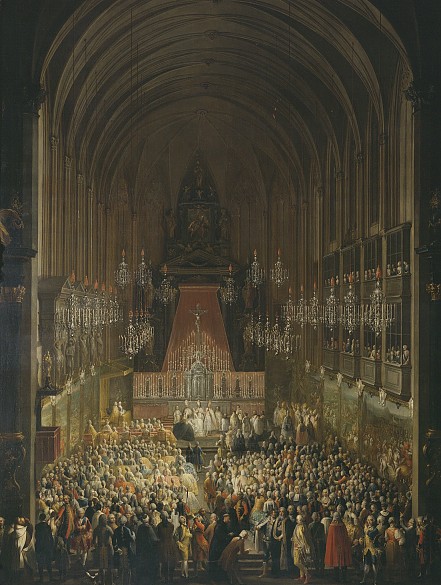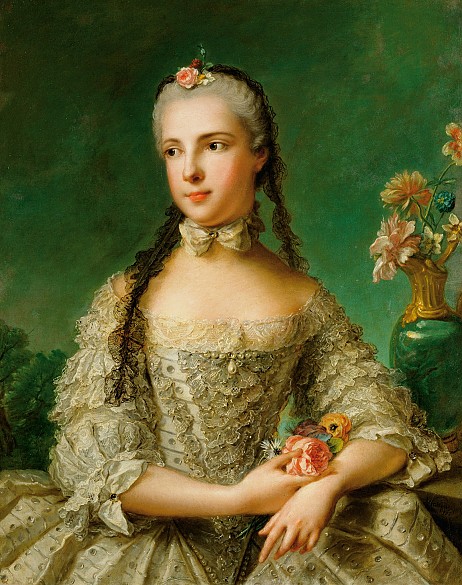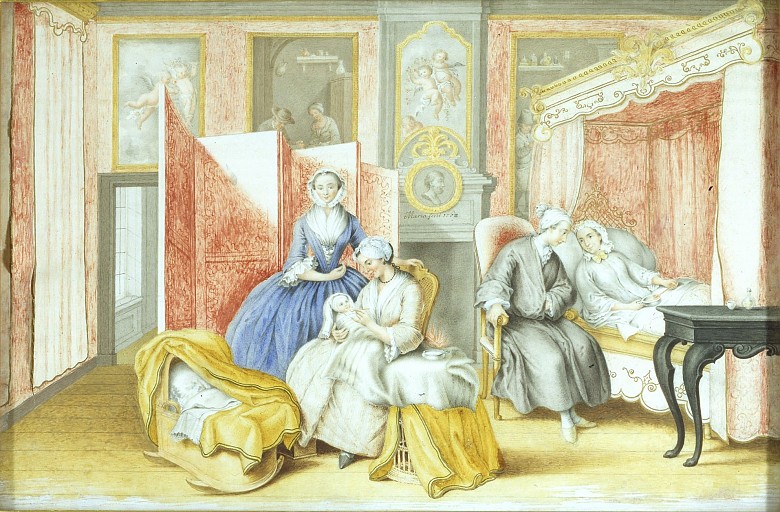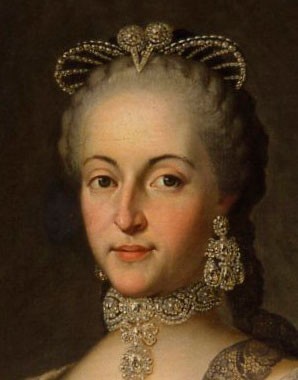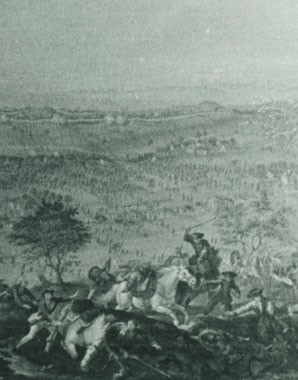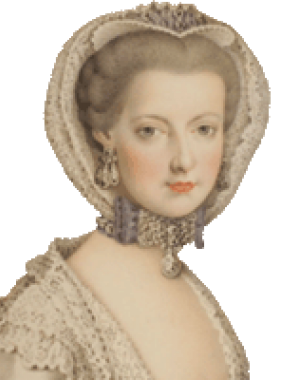Joseph II: The love-life of an emperor
The marriage of an heir to the throne invariably affected the interests of the Monarchy, as there were matters of dynastic succession to be considered. What little importance was accorded to personal factors in these alliances can be seen in the schemes to find a bride for Joseph II.
The first enquiry in respect of the crown prince’s marriage came from Naples when Joseph was just twelve years old. At that time the southern Italian kingdom of Naples and Sicily was ruled by a collateral line of the Bourbons. The scheme of allying the Habsburg and Bourbon dynasties had its attractions. In this case a double marriage was proposed: the Austrian heir to the throne was to marry a Neapolitan princess, and the Neapolitan crown prince to become the husband of one of the Habsburg archduchesses. The reaction in Vienna was positive, but it was suggested that the plans could wait for a few years.
Shortly afterwards, in 1755, the prospect of a union with Isabella of Parma (1741–1763) arose. The proposal came from France, as the northern Italian duchy of Parma was ruled by a collateral line of the Spanish Bourbon dynasty. Thus the Bourbons in Parma were merely a cadet branch of a collateral line of the Bourbons, and Parma itself was an unimportant minor state. However, on her mother’s side Isabella was a granddaughter of Louis XV of France.
This proposal had a concrete political background. During the course of the renversement des alliances, the diplomatic sensation of Maria Theresa’s reign, the old ‘arch-enemies’ France and Austria had become allies. Now the new alliance was to be cemented by a series of marriages between the two dynasties.
In 1759 the marriage plans were announced officially. Joseph and his bride Isabella were both eighteen years old at this point.
The reaction in Naples was initially one of affront, but a way was found to defuse the situation. The Neapolitan princess Maria Luisa was promised to Archduke Karl Joseph, who as the next oldest son after Joseph was the presumptive Grand Duke of Tuscany, where a Habsburg secundogeniture was to be established. Here too destiny had other ideas, as Karl Joseph died in 1761 at the age of only sixteen. Maria Luisa was duly passed on to Maria Theresa’s next son, Archduke Peter Leopold.
The nuptial celebrations for Joseph and Isabella in 1760 were a lavish and costly spectacle that was intended as a public display of the undiminished resources of the Monarchy, which at the time was involved in hostilities (the wedding took place during the Seven Years’ War). An impression of the legendary pomp of this wedding can be gained from the famous cycle of paintings at Schönbrunn which provide a detailed record of what was to be the last great festivity of the Baroque age in Vienna.
Joseph was enchanted by his bride and fell deeply in love with her, an affection that was however not returned to the same degree. Isabella grew very close to Archduchess Marie Christine, one of her husband’s sisters. The extant correspondence between the two women attests to a very intimate, perhaps even lesbian relationship.
Isabella had a keen intellect and was highly educated, something that was unusual for women of her day. She was of a melancholy disposition and seems to have been afflicted with depression and even haunted by premonitions of death.
She felt the role of wife and mother she had been assigned as an imposition, and above all disliked seeing herself reduced to her function as a ‘brood mare’. Joseph’s wife became pregnant five times during the three years of their marriage. Three of these pregnancies ended in miscarriages. Their only surviving child, a daughter born in 1762, was named Maria Theresia after her grandmother. A further pregnancy in 1763 was imperilled when Isabella contracted smallpox. She bore a girl who died immediately after the birth, to be followed five days later by her mother, who was only twenty-two. For Joseph this was a heavy blow.
Joseph’s daughter Maria Theresia died in 1770 at the age of eight, deeply mourned by her father, who seems never to have come to terms with the death of his only and much- idolized child.
Joseph’s second marriage, to Maria Josefa of Bavaria (1739–1767), which he entered into at the insistence of his mother in 1765 after he had become Holy Roman Emperor, was an unmitigated disaster. Maria Josefa was a daughter of the Bavarian elector Karl Albrecht and Archduchess Maria Amalie, a daughter of Emperor Joseph I. As the Bavarian elector had no sons, this marriage was part of a scheme on Maria Theresa’s part to eventually lay claim to the territory of Bavaria.
Maria Josefa is described as physically unattractive and rather slow-witted but also affectionate and sweet-tempered. She tried in vain to win Joseph’s affections but was systematically ignored by him. The marriage was probably never even consummated. She was released from her humiliating position at the Viennese court by her early death. In 1767, when a smallpox epidemic struck numerous members of Maria Theresa’s family, Maria Josefa also contracted the disease and died unheeded by her husband.
Now twice widowed, Joseph subsequently resisted any further marriage plans made by his mother.
However, this does not mean that Joseph lived a life of monastic abstinence. He satisfied his carnal appetites in countless affairs with women from lower social strata which were common knowledge at the time. He is supposed to have fathered numerous illegitimate children. The emperor was also known to visit prostitutes but was notorious for being tight-fisted when it came to paying for their services, as still attested today by the following inscription on the entrance to a house on the Spittelberg in Vienna, then a quarter of ill-repute and the centre of the city’s red light district: ‘Durch dieses Thor im Bogen, kam Kaiser Josef II. geflogen’ (‘Emperor Joseph II came flying through this archway’).
